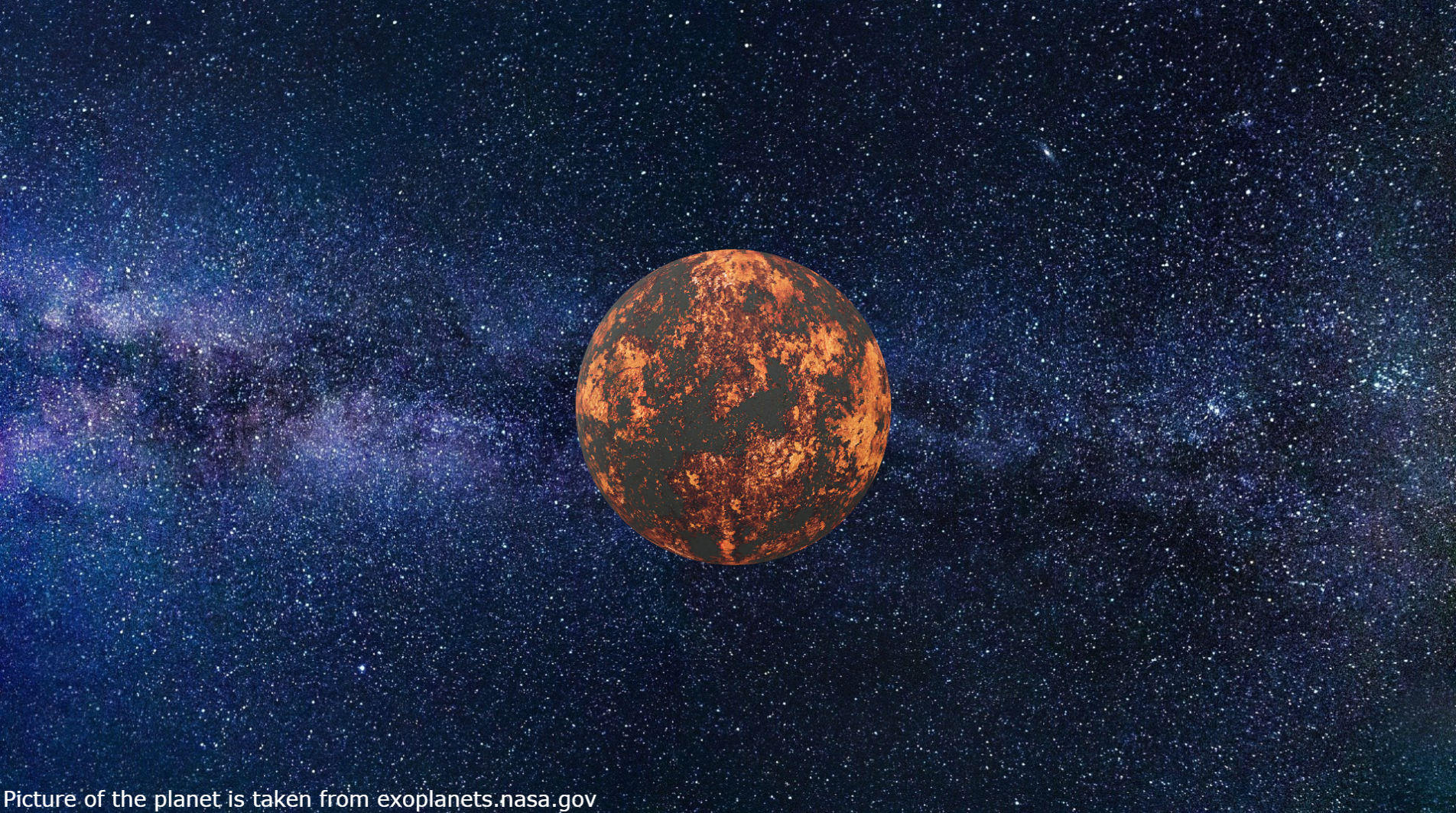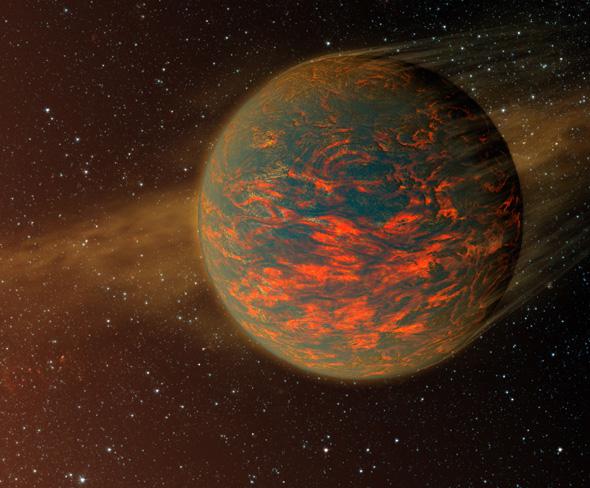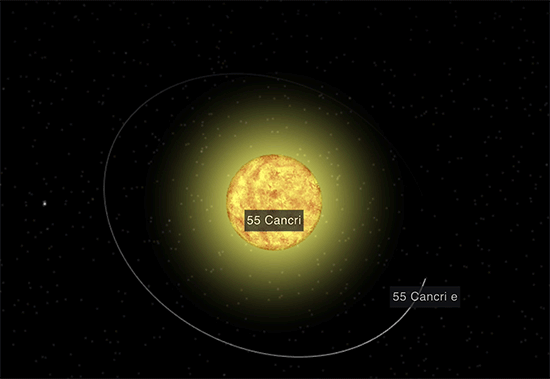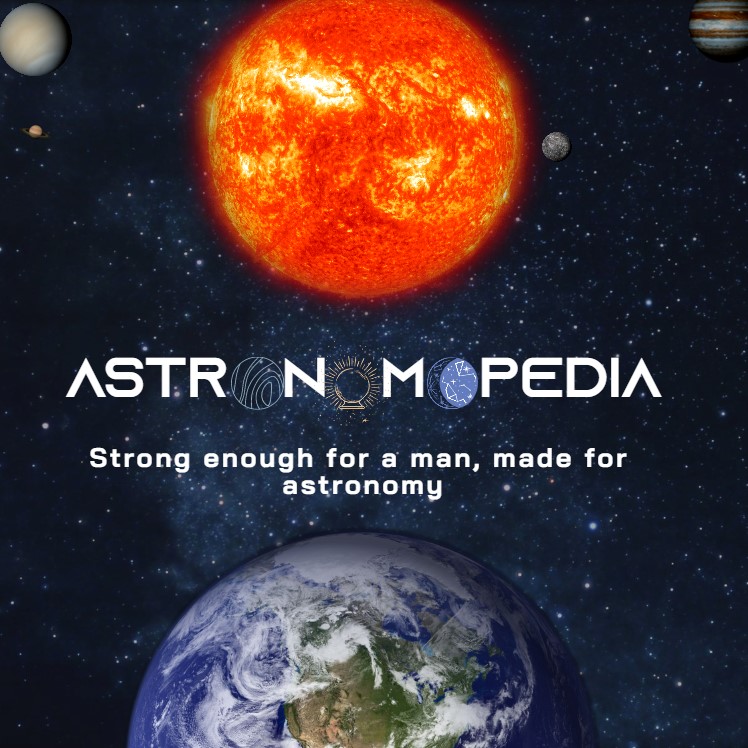

55 cancri e

What is 55 cancri e?
The extrasolar planet 55 Cancri e, also known as Rho Cancri e, HD 75732 e or Janssen, orbits around a yellow dwarf star called 55 Cancri A. It is situated 40 light years away from our Sun, in the constellation of Cancer (Located in the northern hemisphere's second quadrant, the constellation can be seen at latitudes between +90° and -60°). This exoplanet is estimated to be worth 26.9 nonillion dollars.
Why is 55 Cancri e called a diamond planet?
According to research, this exoplanet is a carbon-rich world, hence the nickname "diamond planet". This idea was derived from estimates of the planet's size and density. In any case, even if we could get to this diamond planet, it would not be a very appealing place to visit.
Morphology
Geomorphology
This super Earth has a diameter of 23,892 km and an area of 1,793,307,995.69 km² (1,114,309,926.9 miles²).
Anatomy
Carbon (primarily diamonds and graphite) is a component of Cancri e, as is iron, silicon carbide, and possibly silicates. Therefore, This exoplanet has a density of 5.9 g/cm³ a bit higher than Earth's, and a mass of 48,253,760,000,000,000,000,000 tons.
Tectonic plates
Studies of the tectonic plates of 55 Cancri e has yet to be made.
Location
55 Cancri e is located approximattely about 40 light years away from Earth and 0.01544 astronomical units (2,309,791.124 km or 1,435,237.664 miles) from its hosting star.
Physico-chemical properties
Until 55 Cancri e was the subject of detailed research, it was unclear if it was a planet or a small gas giant. Initially, it was believed to be a water exoplanet. It is possible that carbon dioxide was the base material instead of water or hydrogen, as Ehrenreich suggests. There is also another possibility of 55 Cancri e being a solid planet made from carbon-rich material rather than oxygen-rich material. About a third of the planet's mass would be carbon, and much of it could be in the form of diamond due to the temperature and pressure in its interior. Another study partially confines a hydrogen-rich atmosphere on the nightside. Hydrogen cyanide was detected by NASA's Hubble Space Telescope in 2016. Spitzer observed the infrared of the planet, revealing that the atmosphere may contain similar chemicals in Earth's atmosphere, such as nitrogen and possibly oxygen.
Temperature
55 Cancri e's cold side averages 1,300° to 1,400° degrees Celsius (2,400° to 2,600° Fahrenheit), while its hot side averages 2,300° degrees Celsius (4,200° degrees Fahrenheit).
Age
55 Cancri e's age is about 5,500,000,000 terrestrial year.
Force fields

Gravitational force
55 Cancri e has a gravity of 2.14 gforce (22.29 m/s² or 73.129921 ft/s²).

Magnetic field
According to wind simulation based on magnetic geometry, 55 Cancri e orbits inside the Alfvén surface (The surface of the region surrounding a neutron star within which ionized gas is pulled around by the star's magnetic field as it spins) of the stellar wind, meaning that effects from the planet on the wind can propagate back to the surface of its star and result in SPI.
Motions

Orbit
It takes 18 terrestrial hours for 55 Cancri e to make one full orbit around 55 Cancri a (its hosting star).
Rotation
Due to its tidal lock with its star, 55 Cancri e has no days.
Satellite systems
Moon system
55 Cancri e has no moons.
Ring system
55 Cancri e does not possess a ring.
Author: William Homier
Editor: William Homier
Sound credit goes to Dillon Dickerson.
This page was last edited on 11 April 2022, at 19:50 (HAE).
Sources:

